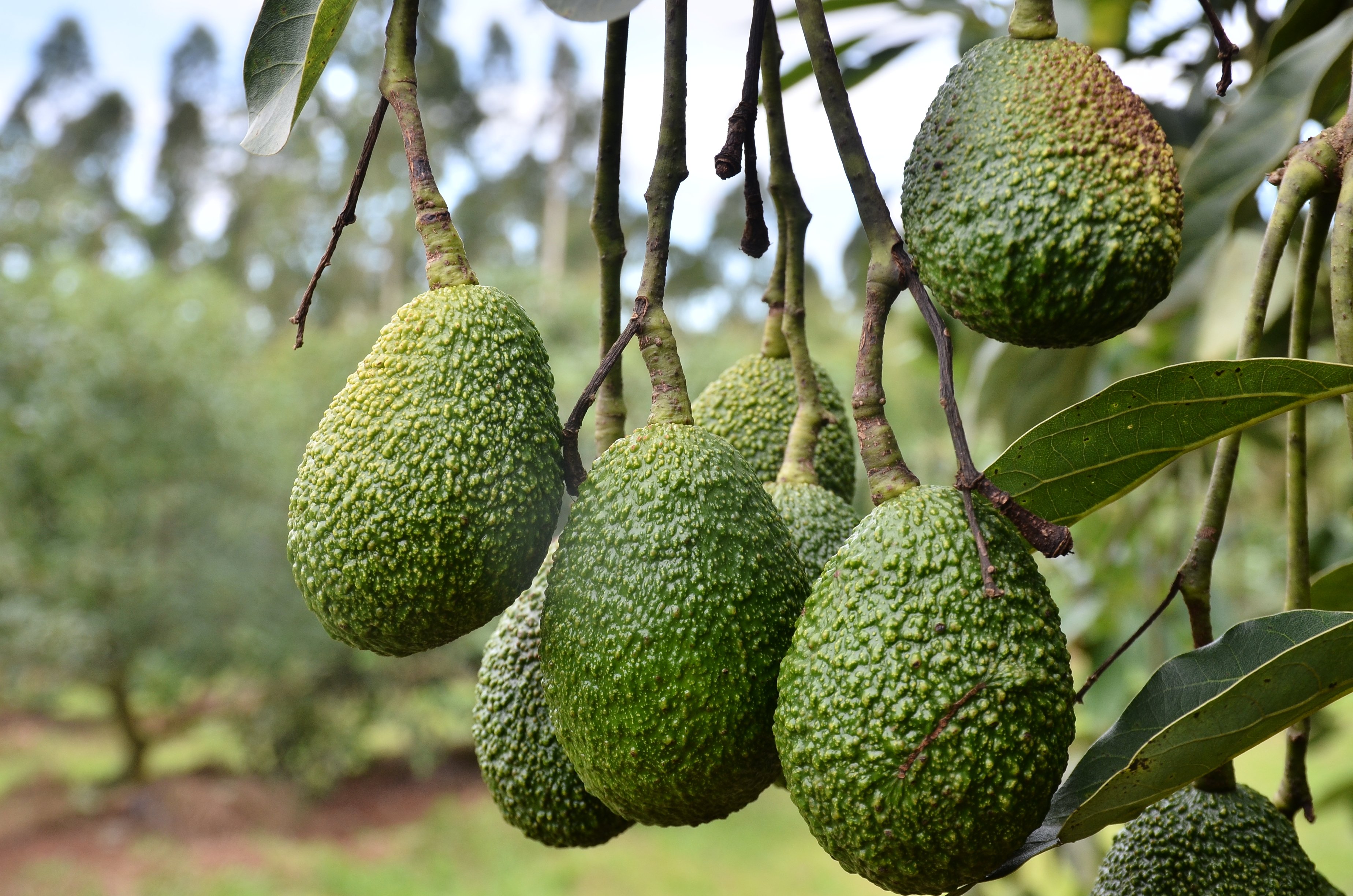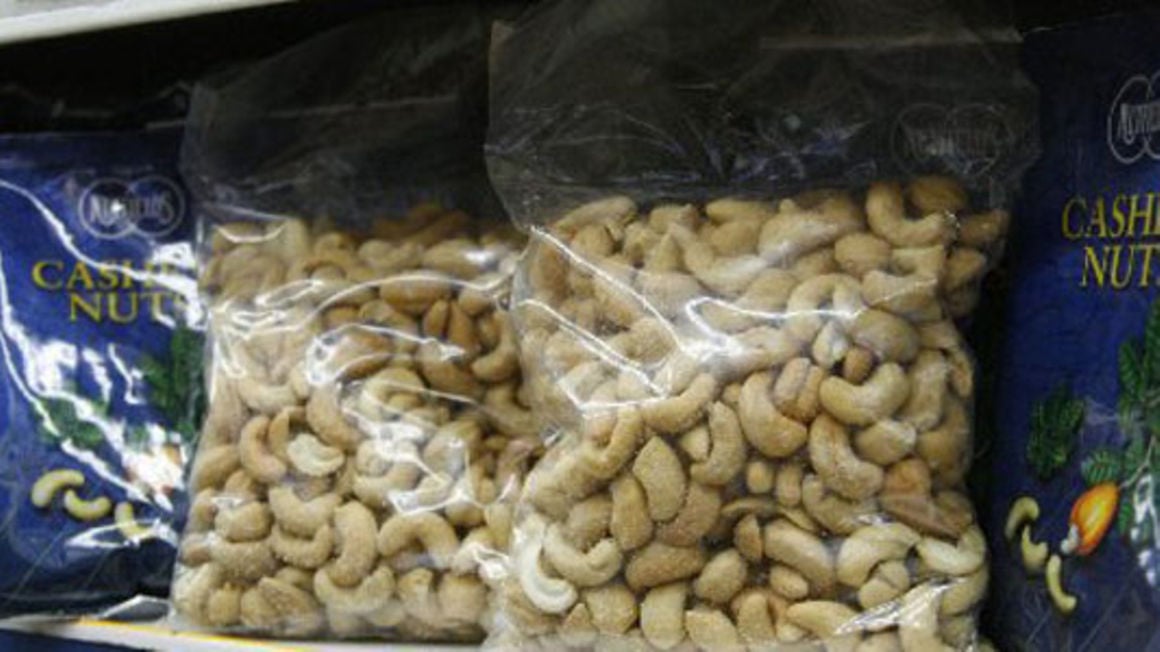
A farmer on his Hass avocado orchard in Kabarole. Participating farmers who desire to take the seedlings contribute 30 percent of the cost of the seedling, while government through NAADS contributes 70 percent. PHOTO/BETTY NDAGIRE
|Prosper
Prime
Hass avocado: The “Green Gold”
What you need to know:
With a longer shelf life, hass avocado can be transported via the sea which means it can open up more opportunities for farmers to do mass production.
Nobody is sure exactly where the avocado fruit first came from. But the earliest evidence for its consumption from information available shows the fruit dates back 10,000 years, from the remains of settlements in central Mexico.
The global avocado market was valued at over nine billion dollars in 2021, and is forecast to reach more than $19.9 billion by 2026. As of May 28, 2021, the Kenyan farm gate price per kilogramme of Hass Avocado was the equivalent of Uganda Shs3,200 and three fruits make up a kilogramme.
Eminent among the avocado types is the “Hass Avocado’’ easily identified by its oval shape, and bumpy, pebbled texture of its skin, and the dark green to purple-black colour as it ripens or fully matures.
Uganda is blessed with a variety of avocado fruits. For anyone who loves avocado fruit, once you taste the hass avocado variety, you really feel a perfect fresh and smooth buttery texture and a rich pulp with a superior taste, often nutty flavour. The unique aroma of hass avocado is, of course, part of what we perceive as flavour.

Hass avocado fruits in a garden. PHOTO/BETTY NDAGIRE
Unlike other varieties, hass avocados have a small to medium-sized seed and if mature, three to four avocados can make a kilogramme, giving you a creamy texture.
According to Ms Khadija Nakakande, the head of communications at the National Agriculture Advisory Services (NAADS), the Hass avocado variety was introduced in Uganda in the early 2000s by small scale farmers but commercial production started in 2018.
Ms Nakakande says by the year 2020, a good number of farmers had picked interest in the crop with some establishing large scale orchards of 50 acres on average. Currently, Uganda has a total acreage of 5,340 hectares of Hass avocado with an expected annual production estimated at more than 47,000 tonnes.
She explains that the use of chemicals in Uganda is minimal because Hass avocado is not commonly attacked by many pests and diseases.
“Since government started supporting Hass avocado farmers, over 100,000 farmers have established orchards. In the next five years, Uganda is expected to be producing a minimum of 344,832 metric tonnes,” Ms Khadija says.
According to Mr Ernest Muthomi, the chief executive officer, Avocado Society of Kenya (ASOK) which leads in hass avocado export in East Africa says, avocado is a very important fruit, that has actually been declared by the World Health Organisation (WHO) as a super food because of its nutritional benefits.
He says the push for Hass avocado has come due to the health benefits of eating the avocado fruit, in addition to the versatility of avocado which has very many other uses. Avocado is used in making oil which can be used for cosmetics and in the pharmaceutical industry.

A Hass avocado farm. The commodity grows well on a good piece of land that does not log soil. PHOTO/BETTY NDAGIRE
Mr Muthomi says that the west and developed world have realised that avocadoes grow well in tropical climates and “the most fortunate thing is as East Africa we are blessed to have that climate.”
He notes that the region grows avocadoes successfully without having to use a lot of water, cut forest to plant or use a lot of fertilisers. The avocados here grow naturally and enjoy robust weather and very good soils, almost organically.
“Where avocados were first sighted in Mexico, they have been growing there for the last 4000 years. Avocados came to East Africa in the last century; it actually started in the 1920s and it was very slow until it picked up in the 1990s.That is when Kenya, the leading producer in East Africa, went into orchards,” Mr Muthomi says.
He advises Uganda - the new entrant in the hass avocado industry to avoid the ‘copy and paste’ mentality in growing avocadoes just because they have heard someone is doing the same. With this fruit, you need to understand the agronomy, the best practices, the pruning the training and growing itself.
“Since Uganda’s orchards are still young, we have agreed that Kenya will play host for Africa Avocado Conference for at least five years. Then after word they shall move to Uganda and Tanzania because then these other nations will have the capacity to demonstrate to their farmers and probably have the infrastructure that Kenya has,” Muthoni says.
He further states that they also want to push avocado growing as a region because Kenya is sometimes asked for the fruit when they lack volumes. So they either have to engage Uganda or Tanzania.
“We have to give you a report on the markets as a region. It can even help for Kenya to be a distributor or marketing hub and nations like Uganda be the growing hub. Uganda can grow the fruit while Kenya can market and both nations benefit,” he says.
Mr Muthomi says Uganda is blessed with fertile soils and good weather. So at the moment, Kenya can help distribute Uganda’s fruits as she builds her infrastructure. But still Uganda can sell directly.

A nursery attendant at Royal Plants nursery in Kyenjojo District shows off a well-grafted Hass avocado seedling. PHOTO/BETTY NDAGIRE
Kenya being a leading exporter only occupies two per cent of the market.
“We are just scratching the surface,” he laments.
Other than that, he says that even if Kenya, Uganda and Tanzania were to grow avocadoes, they cannot beat Mexico which produces 800,000 metric tonnes of avocado. Kenya does only 84 metric tonnes.
“Even if Uganda distributes in Dubai alone, it cannot manage to satisfy the huge market for the avocado fruit there,” he says.
Hass Avocado takes the lead in being promoted as a commodity because it accounts for 80 percent of the global avocado market.
Mr Ochan Abdallatif, an agronomist in Uganda, says that growing Hass avocado, is a very sure opportunity in the market both internally and externally.
“Another quality aspect of hass avocado is that it is the premium of all avocado; all other varieties are branded or calibrated on hass avocado,” he asserts.
“Hass avocado sort of has this mythology of celebrity in it. Unlike other varieties, hass avocado has a longer shelf life, with ability to be transported via the sea which means it can open up more opportunities for farmers to do mass production,” Mr Ochan says.
Mr Ochan notes that another key aspect hass avocado has is quality, this avocado has a very high dry matter content, that whenever you eat hass avocado, you feel it has that fresh nutty taste.
“If you want to access the market, then the quality issues have to come in right from the land you are going to grow your hass avocado,” Mr Ochan says.
He asks through experience, "First, have you selected good land that does not log soil? How much clay content does that land have? If you have finished selecting the good land, then the quality of seedling is very paramount.”
What makes a good tree?
He mentions that there are four criteria of a good tree. One you have to buy it from a certified nursery.
Secondly, the nursery should be free from what they call the root rot disease, which is very impactful to the avocado.
Thirdly, your hass avocado tree must be well hardened to be easily transported long distances from the nursery to where you are taking it.
Finally, after establishment, focus on the plant as the fruits of this plant are for export. The farmer should know that the World Trade Organisation or the export market does not know about a third world country when it comes to food. Standards must be met without fail.
Mr Ochan who doubles as a technical assistance provider in orchard management especially in tropical fruits, says its important to look after your avocado diligently, with aspects about the fruits, the most critical one being the root rot disease, which can eliminate an orchard by up to 90 per cent.
“You can lose your project if you do not look at this disease seriously. When it comes to fruits, we have damages from pests and diseases. The most important pest being FCM that is impacting on our avocado. We also have the suckling bug and the fruit fly,” Mr Ochan explained.
Mr Ochan says, Hass avocado would need mulching. He has visited a farm in the north and found avocado is not mulched, then later on they realise they have to do a lot of watering. For avocado, he advises farmers that if they understand these critical issues, that is the soil, roots and water, then they are good to go.
Uganda’s avocado fruiting season – the comparative advantage
Mr Ochan says Uganda has the potential to supply the world market as its avocado does not mature at the same time as Kenya and Peru whose avocadoes are ready between June and August.
“If we have avocadoes from August, it means you are in the market. You are entering the market when these other big suppliers are out. So, we have an opportunity and we can always target that market. Some of these measures of how to delay fruiting and flowering are key. Uganda’s avocado farmers always need to consult an agronomist to help them with it,” Ochan says.
Uganda already has five oil extraction companies with many Ugandan farmers starting up small cottage industries on oil extraction.





